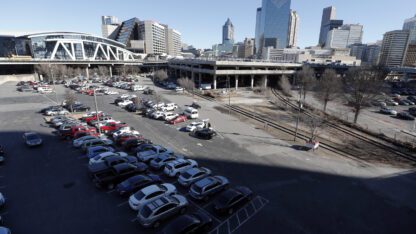This story was updated on Thursday, Nov. 14, 2024, at 12:22 p.m.
The City of Atlanta and MARTA will move forward with a planned renovation of the Five Points station after a temporary delay.
The two parties reached an agreement to keep one entrance open to allow for bus and pedestrian street-level and elevator access on Forsyth Street.
The $230 million project was originally set to begin in July, but in June, Atlanta Mayor Andre Dickens asked MARTA to delay construction until the completion of an audit into the More MARTA transportation expansion program after the city’s chief financial officer flagged concerns related to the audit. The program’s half-penny sales tax, approved by Georgia voters in 2016 to fund a number of capital projects, is funding the renovation.
The city released the results of the audit in mid-August. The audit found that MARTA had overcharged the expansion program by $70 million, which MARTA disputed. MARTA General Manager and CEO Collie Greenwood did agree with the audit that the resequencing plan and 2020 Intergovernmental Agreement needed revision.
According to MARTA Director of Communications Stephany Fisher, the current agreement to leave one entrance open for pedestrian access means that the original construction timeline will be extended. Fisher added there were no changes to the budget to reported at this time.
At a Thursday MARTA board work session and meeting, Greenwood said that MARTA will share details of the construction timeline and station access details as soon as it can.
Greenwood also thanked Dickens for “his continued engagement and his commitment to MARTA’s vision of this project.”
“I am pleased to announce that MARTA and Mayor Dickens have agreed to move forward with the originally planned Five Points Transformation Project,” Greenwood said at Thursday’s meeting.
“This is a win-win for MARTA, for the City of Atlanta and for the riders that we serve as we move forward in improving transit across our region,” he added.
The Five Points Transformation Project aims to overhaul the station and improve navigation and pedestrian access. It plans to replace the concrete canopy with a new canopy to let in more natural light, create a centralized bus station and communal spaces, display public art, use sustainable practices and more.










